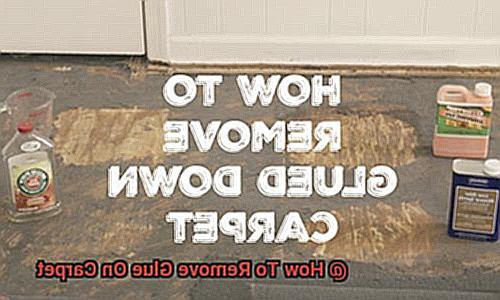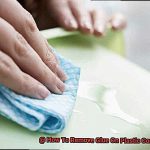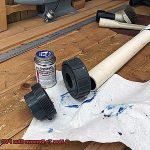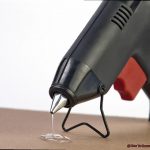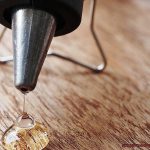Carpet stains can be a real pain, but there’s one type of stain that can really give you a headache: glue.
This sticky and gooey substance seems to cling to your carpet fibers for dear life, making it seem impossible to remove. Whether you accidentally spilled glue on your carpet during a project or got it stuck there while trying to make a repair, you’re probably wondering how to get rid of it without causing any damage.
In this blog post, we’ll share some easy and effective ways to help you remove glue from your carpet. From homemade solutions to specialized products, we’ll provide you with all the tools and techniques you need to tackle even the most stubborn glue stains on your carpet.
We’ll guide you through each step of the process, explaining how to remove glue from different types of carpet while keeping the fibers and colors intact. With our expert advice, you’ll be able to confidently tackle any pesky glue stains on your carpet.
So, if you’re tired of staring at that stubborn glue stain on your carpet, keep reading and discover the secrets to successfully removing it once and for all.
Identifying the Type of Glue
Contents
Knowing the type of adhesive is crucial because different types require different removal methods to avoid damaging your carpet fibers. There are several types of glue that can be found on carpets, including carpet adhesive, construction adhesive, super glue, and hot glue.
Carpet adhesive is commonly used by professional installers to secure carpets to subfloors, while construction adhesive is a heavy-duty adhesive typically used for installing tiles or hardwood floors. Super glue and hot glue are fast-drying adhesives that can be used for various projects.
Super glue is a clear, thin liquid that dries quickly and forms a strong bond. Hot glue, on the other hand, is melted adhesive that hardens as it cools down.
Identifying the type of glue is critical because different adhesives require different removal methods. For example, if you’re dealing with carpet or construction adhesive, you may need to use a solvent-based cleaner to dissolve the adhesive before using a scraping tool to remove it from the carpet fibers.
Meanwhile, super glue and hot glue can often be removed by applying heat or using a solvent specifically designed for these types of adhesives. When removing glue from carpets, remember to be gentle to avoid damaging the fibers and leaving unsightly bald spots or frayed areas.
Take your time and be patient when working on a glue stain, and don’t hesitate to seek professional help if needed. In conclusion, identifying the type of glue is crucial when it comes to removing it from carpets.
It helps determine the best method and products to effectively remove the glue without causing any damage to your carpet.
Removing Adhesive Residue
While it may seem like a daunting task, fear not – we’ve got you covered. One of the most effective ways to remove adhesive residue is by using a solvent.
Rubbing alcohol or acetone are great options that can easily break down the adhesive for removal. However, be sure to test the solvent on an inconspicuous area of your carpet first to avoid any damage or discoloration.
Another option is using a heat gun or hair dryer to soften the adhesive, making it easier to scrape off with a putty knife or scraper. But remember to use caution as too much heat can harm your carpet fibers.
If these methods don’t work, try a commercial adhesive remover specifically designed for removing residue from various surfaces, including carpet. You can find these products at most hardware or home improvement stores.
Once you’ve successfully removed the adhesive residue, don’t forget to clean the area thoroughly with warm water and mild detergent, blotting with a clean cloth until all residue and solvent are removed. In conclusion, removing adhesive residue from your carpet might take some effort and patience, but with these techniques and tools in hand, you’ll be able to make your carpet look as good as new in no time.
Remember to always test any solvents or products on an inconspicuous area first and clean the area thoroughly once finished.
Commercial Adhesive Remover
These chemical solutions are designed to dissolve and remove adhesives from various surfaces, including carpets. They are available in hardware stores, home improvement centers, and online retailers in a variety of formulations such as sprays, gels, liquids, and wipes.
Before using any commercial adhesive remover on your carpet, it’s essential to read the label carefully and follow the instructions. Some products may contain harsh chemicals that could damage or discolor the carpet fibers if used improperly.
To ensure that it does not cause any adverse reactions, it’s also recommended to test the product on a small, inconspicuous area of the carpet first. Ready to get started?
Apply the solution directly to the glue stain and let it sit for a few minutes to allow the product to penetrate the adhesive and break it down. Then, using a clean cloth or sponge, gently blot the affected area until the glue is removed.
Repeat this process as necessary until all traces of glue are gone. Afterward, follow the manufacturer’s instructions for proper cleanup and disposal of any leftover product.
Some commercial adhesive removers may require rinsing with water or cleaning with a damp cloth to remove any residue. In conclusion, commercial adhesive removers are an effective solution for removing stubborn glue stains from carpets.
However, it’s crucial to take care when using these products to avoid causing damage or harm.
Gentle Removal Techniques
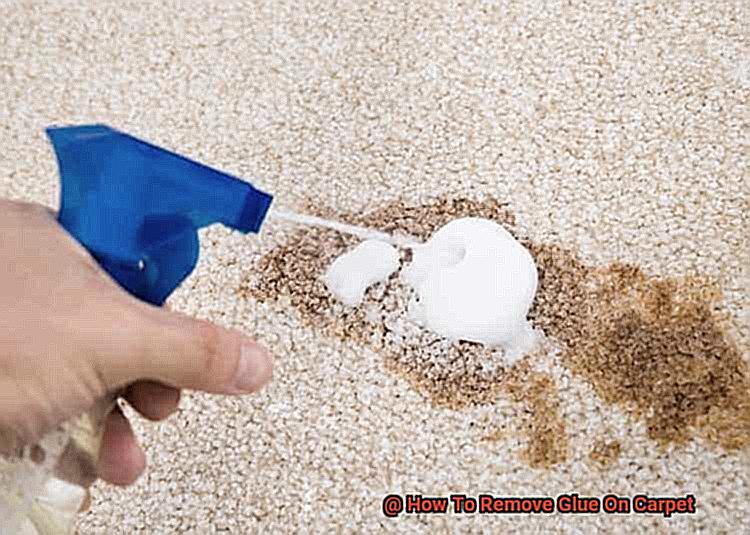
If you’re dealing with a stubborn glue stain on your carpet, you might be tempted to use harsh chemicals or abrasive tools to get rid of it.
But hold your horses, dear friend. These methods can cause permanent damage to your carpet fibers, leaving you with an even bigger problem.
Instead, let’s explore some gentle removal techniques that are effective at removing glue without harming your carpet.
Water and Dish Soap
One of the most effective gentle removal techniques is using a mixture of warm water and dish soap.
This method is perfect for small glue stains and is easy to do. Simply mix a small amount of dish soap with warm water and apply the solution to the glue stain.
Rubbing Alcohol
Another effective gentle removal technique is using rubbing alcohol.
Rubbing alcohol can dissolve glue without damaging your carpet fibers. But before you go crazy with the rubbing alcohol, remember to test this method on an inconspicuous area of your carpet first.
Apply a small amount of rubbing alcohol onto a clean cloth and dab it onto the glue. Allow it to sit for a few minutes before gently rubbing off the glue.
If neither of these techniques work, you can try using a citrus-based solvent. Citrus-based solvents are known for their ability to dissolve adhesives without causing damage to surfaces.
Apply the solvent onto a clean cloth and dab it onto the glue stain. Allow it to sit for a few minutes before gently rubbing off the glue.
Remember, when using any of these gentle removal techniques, always test them on an inconspicuous area of your carpet first to ensure they don’t cause any damage. And never ever use harsh chemicals or abrasive tools when trying to remove glue from carpet as they can cause permanent damage.
By using these gentle removal techniques, you can effectively remove glue from your carpet without causing any damage or breaking a sweat.
0WX0gf6DzJQ” >
Multiple Treatments May Be Required
Removing glue from carpet can be a real pain, but don’t lose hope.
It’s important to remember that multiple treatments may be needed to tackle stubborn glue stains. Some glues are more difficult to remove than others, so if you’re dealing with a particularly tough stain, you may need to apply the solvent or adhesive remover several times before you see any progress.
Don’t get discouraged. Keep at it until the glue is completely removed.
When removing glue from your carpet, it’s also crucial to consider the type of carpet you have. Certain solvents or cleaning methods can damage delicate carpets.
Test any removal process on a small, inconspicuous area of the carpet first to ensure it won’t cause any harm. If multiple treatments are required, be patient and persistent.
Don’t give up after one attempt – try different methods and solvents until you find what works best for your particular situation. With persistence, you’ll eventually succeed in removing that stubborn glue stain.
Keep in mind that multiple treatments may be necessary and always test any solvents or cleaning methods on a small area first.
Also Read: How to Remove Sugru
Conclusion
In conclusion, don’t let the fear of removing glue from your carpet get the best of you.
With a little know-how and the right tools, it’s a breeze. Start by identifying the type of glue you’re dealing with to determine the best removal method for your specific situation.
From solvent-based cleaners to heat guns, there are plenty of options to choose from when it comes to removing adhesive residue without damaging your carpet fibers. And if all else fails, commercial adhesive removers can be a quick and effective solution.
But remember, caution is key. Be sure to read labels carefully and test any products on an inconspicuous area first before applying them to larger stains.
Harsh chemicals or abrasive tools can cause permanent damage to your carpet fibers, leaving you with an even bigger problem. So take your time and use gentle removal techniques.
Stubborn glue stains may require multiple treatments, but don’t give up after one attempt. Try different methods until you find what works best for you.
With these tips and tricks in mind, you’ll be able to confidently tackle any pesky glue stains on your carpet.

